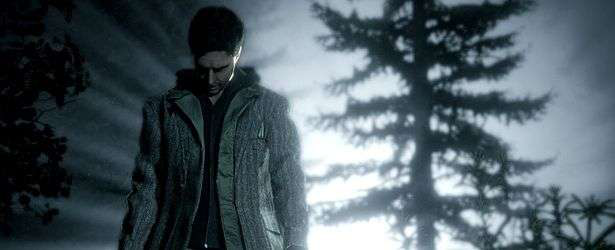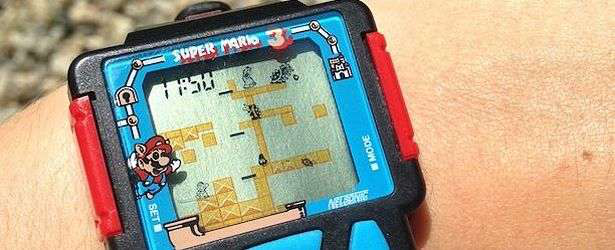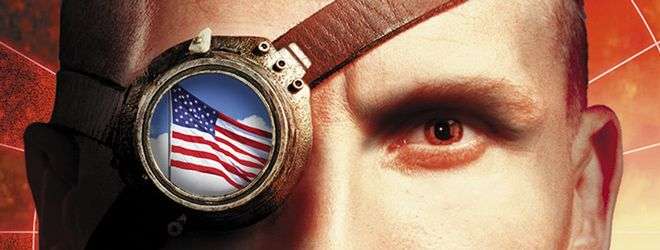The Rise and Fall of Command & Conquer
by Ste
 Command & Conquer is probably one of the most recognised computer game franchises in the world today, and especially so if you are a fan of the real-time strategy (RTS) genre. If you’ve been anywhere near a PC and used if for gaming in the last sixteen years, then you’ve probably played a C&C game. In 1995 Westwood Studios, the original developers of the series, released the original Command and Conquer (since sub-titled Tiberium Dawn) to critical acclaim, receiving a Metacritic score of 94%. It is arguably the game that defined the modern RTS genre, and it is the game that got me seriously into PC gaming. A strange meteor has crashed into Earth, and a crystal-like substance with strange properties starts to cover the planet’s surface.
Command & Conquer is probably one of the most recognised computer game franchises in the world today, and especially so if you are a fan of the real-time strategy (RTS) genre. If you’ve been anywhere near a PC and used if for gaming in the last sixteen years, then you’ve probably played a C&C game. In 1995 Westwood Studios, the original developers of the series, released the original Command and Conquer (since sub-titled Tiberium Dawn) to critical acclaim, receiving a Metacritic score of 94%. It is arguably the game that defined the modern RTS genre, and it is the game that got me seriously into PC gaming. A strange meteor has crashed into Earth, and a crystal-like substance with strange properties starts to cover the planet’s surface.
Trouble then starts as world powers attempt to control the crystal. This is where you come in. You are an army commander, drafted in to take control of either the GDI (Global Defence Initiative) or the Brotherhood of NOD (or simply NOD for short). Once in control of your troops you have to build a base, collect the crystal, and then raise an army to destroy your enemy with. The story is a little far fetched, but it was interesting and was brought to life with brilliant (if a little hammy) live action cutscenes. The graphics and animations were great for its time and, most importantly, it was a lot of fun to play.
Just over a year later, and on the back of their success Westwood released their second game in the Command & Conquer universe – Red Alert. Set in an alternate reality, Albert Einstein has successfully created a time machine, and goes back in time to get rid of Hitler thus preventing the Second World War. However, taking out Hitler means that Stalin and the Soviet Russians go unchecked, and Europe is at the brink of war again. Once again the story is brilliantly far fetched, and Westwood strike gold again with Red Alert. The mix of slightly wacky units along with improved gameplay, a decent multiplayer mode, and the now infamous live action cutscenes mean that Red Alert sold in the region of 3 million copies worldwide. If that isn’t testament enough to how great Red Alert was, the game is also still one of my all-time favourite games ever.
Westwood’s success was starting to get them noticed, and in 1999 they were bought by publisher EA. That same year Westwood released Tiberian Sun, which was the sequel to the first Command & Conquer. Set 30 years after the events of the first game, Tiberian Sun introduced a better graphics engine and some new gameplay mechanics. Unfortunately the game was not received as well as the two previous games, though it was still a good game with an excellent sci-fi story.
 Not deterred by this Westwood released Red Alert 2 in 2000. Most would say that RA2 was the pinnacle for Westwood Studios, and I would be inclined to agree with them. Following on from the story of Red Alert the Soviets have been defeated and the Allies have placed a puppet (not literally) in charge of the Kremlin, in an attempt to keep an eye on Russia. Years later the Allies have become complacent, and the Soviets take this opportunity to build up a huge army in secret and invade the USA… bastards! Westwood don’t disappoint with RA2, going all out with the wacky units by introducing psychic soldiers, giant squids, and attack dolphins to name a few. This, along with the increasingly cheesy (but fun) live action cutscenes meant that Westwood carved out another hit, however there is talk that it’s all starting to get a bit samey, and how could this be topped?
Not deterred by this Westwood released Red Alert 2 in 2000. Most would say that RA2 was the pinnacle for Westwood Studios, and I would be inclined to agree with them. Following on from the story of Red Alert the Soviets have been defeated and the Allies have placed a puppet (not literally) in charge of the Kremlin, in an attempt to keep an eye on Russia. Years later the Allies have become complacent, and the Soviets take this opportunity to build up a huge army in secret and invade the USA… bastards! Westwood don’t disappoint with RA2, going all out with the wacky units by introducing psychic soldiers, giant squids, and attack dolphins to name a few. This, along with the increasingly cheesy (but fun) live action cutscenes meant that Westwood carved out another hit, however there is talk that it’s all starting to get a bit samey, and how could this be topped?
The people at Westwood must have been having the same conversation, because the next game to be released in the C&C series was a complete and utter shock to many. In a seemingly WTF moment of madness, Westwood decided to try and breathe new life into the franchise by releasing a first person shooter called C&C Renegade. As a bit of a hardcore nutjob of a fan, I flat out refused to buy the game, and I’m extremely glad that I didn’t. As you can probably imagine, the game looked awful. The reviewers also decided it wasn’t worth much of a play and gave out fairly average scores. I’m told that the only redeeming feature of the game was the multiplayer element, which rewarded players for working together. However, as I never played the game due to my nerd-rage, I wouldn’t know. This was undoubtedly the beginning of the end for the C&C franchise.
Unfortunately for Westwood, this was the last game that they ever produced. A year after the release of Renegade Westwood went into administration, and about a third of the staff were merged into EA Pacific to form new studio EA Los Angeles. The studio that fathered C&C was dead and buried, but, all was not lost though. EA still owned the rights to the C&C universe, and that very same year they released C&C Generals. This was a fully 3D reboot of the series by EA Pacific. Set in an all new world, and completely unrelated to the other C&C games, Generals was the fresh start that the C&C franchise desperately needed following the disastrous Renegade.
 Generals gave the C&C franchise a much needed kick up the arse, and in my opinion the game was very good. Even the reviewers agreed and it received a Metacritic score of 85%. Unfortunately, for some reason EA didn’t agree and apart from a fairly standard issue expansion disc, decided not to continue with this particular arm of the franchise. We’ve not seen head nor tail of Generals since. All goes quiet at this point, and it’s three-and-a-half long years before the franchise makes a come back with the release of C&C 3: Tiberium Wars by EA Los Angeles in 2007. Continuing with the Tiberian story, things are mixed up a bit with the introduction of the Scrin, an alien race attracted to Earth because of the Tiberium. Of course these guys aren’t friendly, and shit gets real with the GDI and NOD factions having to team up in one of them uneasy alliances that you see in a lot of films, in order to defeat the aliens.
Generals gave the C&C franchise a much needed kick up the arse, and in my opinion the game was very good. Even the reviewers agreed and it received a Metacritic score of 85%. Unfortunately, for some reason EA didn’t agree and apart from a fairly standard issue expansion disc, decided not to continue with this particular arm of the franchise. We’ve not seen head nor tail of Generals since. All goes quiet at this point, and it’s three-and-a-half long years before the franchise makes a come back with the release of C&C 3: Tiberium Wars by EA Los Angeles in 2007. Continuing with the Tiberian story, things are mixed up a bit with the introduction of the Scrin, an alien race attracted to Earth because of the Tiberium. Of course these guys aren’t friendly, and shit gets real with the GDI and NOD factions having to team up in one of them uneasy alliances that you see in a lot of films, in order to defeat the aliens.
Now I’ll admit, I did enjoy playing Tiberium Wars for a while, but it was no Red Alert 2, not by a long shot. I completed the GDI portion of the game and then set about starting the NOD campaign, which just turned out to be similar missions but from a bit of a different perspective. What a load of shite. There were promises of a Scrin campaign if you completed both sets of GDI and NOD missions, which interested me, but I just couldn’t be bothered with the slog and I quit. The multiplayer was a load of rubbish too. People just chose to play as the Scrin, who were extremely over-powered and difficult to play against. I’m not sure if a balance patch was issued to fix things, as after having my ass handed to me by the Scrin every time I played, I gave up on the multiplayer too.
So Tiberium Wars had potential but ultimately fell short in the end. Hopefully the release of Red Alert 3 in October 2008 would set things right in the world. Once again EA Los Angeles stepped up to the plate, and hopefully this time they would have learned from their mistakes. As with most of the other games this was a day one purchase for me. I had followed the development closely and I was very excited about the game. Again EA LA had introduced a third faction to mix things up a bit. The story this time is that the Russian have lost the war, again, and in order to try and change the outcome they go back in time to try and fix things. Somehow, due to their meddling the Japanese became a super power, and as the Russians and Allies are battling it out elsewhere, they invade the USA… bastards! Unoriginally the Allies and Russians end up having to team up, in another of those uneasy alliances, in order to give Japan a good kicking. For some reason this all sounds very familiar.
Being famous for its over the top units RA3 really, really goes to town this time around, to the point that it’s just stupid. Sexy psychic Japanese school girls make an appearance, along with attack bears, giant stompy robots, jetpack troops, and of course ninjas.
In all fairness to EA LA, RA3 wasn’t a bad game despite all the silliness. They allowed access to all three factions from the start this time, which was good. The single player wasn’t too bad, however, I never got around to finishing the Japanese storyline. The Allied and Soviet missions, which I finished, were pretty good with no repetition of missions in sight this time round. The multiplayer wasn’t bad either; I found that there were only one or two units that were overpowered compared to the rest, and there wasn’t any spamming of any particular faction.
In my opinion RA3 was a success when compared to Renegade and C&C3. It felt to me that things were back on the up, and that the next game would bring back the awesome. C&C would retake its rightful place on the RTS throne. I was wrong – very wrong. After another two year break, C&C4: Tiberian Twilight was released in 2010. EA LA were at the helm once again, and they promised to change the face of C&C forever. Unfortunately it was for the worse.
In an attempt to update the franchise and move it away from the traditional build-and-bash format that the original game had helped create, EA LA decided that they would do away with fixed bases altogether in Twilight, and introduce the Crawler. This is an all-purpose mobile construction yard that can produce either offensive, defensive, or support units/structures depending on which type you choose. For example, the offensive Crawler can build powerful tanks and other offence oriented units. The defensive crawler can build bunkers and anti-air turrets, along with more defence minded units. Finally, the support crawler can build units that heal each other and provide bonuses and the like. Gone also is resource collection. Your crawler can support a limited number of units, and power a limited number of structures, making for quick, small scale battles. Another major change introduced by EA LA is an RPG style persistent levelling up element. The more you play the game, be it single player or multiplayer, the more experience you earn to unlock new units and powers across both the single and multiplayer games.
 It doesn’t sound bad on paper, but in practice it all falls flat on its face. For starters, the persistent experience means that you can’t access the really good units/powers until you reach the higher levels, and you’re not going to reach the higher levels on your first playthrough of the single player campaign. I estimate you are going to unlock about 50% of it all by the time you finish the single player mode. The downside to this is that certain levels are quite difficult if you haven’t unlocked a certain unit type yet. On the flip side, if you ploughed straight into multiplayer and maxed out your character before playing the single player, then you are going to steamroll all the missions quite easily.
It doesn’t sound bad on paper, but in practice it all falls flat on its face. For starters, the persistent experience means that you can’t access the really good units/powers until you reach the higher levels, and you’re not going to reach the higher levels on your first playthrough of the single player campaign. I estimate you are going to unlock about 50% of it all by the time you finish the single player mode. The downside to this is that certain levels are quite difficult if you haven’t unlocked a certain unit type yet. On the flip side, if you ploughed straight into multiplayer and maxed out your character before playing the single player, then you are going to steamroll all the missions quite easily.
Fortunately this system doesn’t affect multiplayer too much, since lower level characters can still take on higher level players as the units are quite balanced. Higher level players may have a slight advantage in terms of unlocked powers etcetera, but overall it’s an even battlefield. However due to the nature of the baseless design of the game, multiplayer games work quite differently to how they used to in the past, and it’s far too complicated. For starters, you have to select a role to play; Offence, Defence, or Support. As you have no base for your enemy to destroy there is no traditional build-and-bash style play. Instead a capture point based system has been introduced. The more kills you get the more points you rack up, with first team to reach the limit winning. There are also certain bonuses for collecting lumps of Tiberium and bringing them back to collection zones, and capturing special building types. These are obviously used to encourage fighting around certain parts of the map. If your crawler is destroyed while fighting, you simply get another after a short cool-down period and are then able to jump back into the fight. Once again, on paper it sounds fun but in practice it’s just a big unstructured mess – especially as players who want to defend or support are few and far between.
So there you have it – the C&C story so far. The latest C&C game is a total flop, getting totally panned by the critics, and the fans hate it, calling it the worse C&C game ever. C&C is a shadow of its former self, the soul ripped out and replaced by a shameful attempt to conform with other modern RTS games.
 So what happened? Where did it all go wrong? The popular theory that holds most water is that EA fucked it all up. It’s not a secret that once EA bought Westwood Studios the pressure was on for them to recoup the expenditure. C&C2: Tiberian Sun was reportedly shipped unfinished and full of bugs due to pressure from EA. Quality took a further nosedive as a number of long-time employees quit due to the demands made on them by EA. As sales became progressively worse Westwood must have started to become desperate. Although this is only speculation, the release of C&C Renegade speaks volumes for this assumption of desperation. When Renegade failed and Westwood was shut down, only a third of the original Westwood staff remained at the studio. The remaining staff were then amalgamated into EA Pacific who went on to create Generals, eventually being renamed EA LA.
So what happened? Where did it all go wrong? The popular theory that holds most water is that EA fucked it all up. It’s not a secret that once EA bought Westwood Studios the pressure was on for them to recoup the expenditure. C&C2: Tiberian Sun was reportedly shipped unfinished and full of bugs due to pressure from EA. Quality took a further nosedive as a number of long-time employees quit due to the demands made on them by EA. As sales became progressively worse Westwood must have started to become desperate. Although this is only speculation, the release of C&C Renegade speaks volumes for this assumption of desperation. When Renegade failed and Westwood was shut down, only a third of the original Westwood staff remained at the studio. The remaining staff were then amalgamated into EA Pacific who went on to create Generals, eventually being renamed EA LA.
Generals was the last game that I can be sure was made by at least some of the original Westwood employees. After this, EA entirely took over the C&C franchise, and I can’t honestly say if any of the original C&C team played any part in the future games or not.
Another theory is simply that the original format of C&C just went stale. People got bored of the countless games where you did pretty much the same thing, but in different settings with different units. Whilst I can relate to this in some ways, it doesn’t hold as much water as the first theory. I agree that genres evolve and new innovations come to the fore from time to time, however that doesn’t mean C&C had to follow suit. It was great how it was – it didn’t need a gimmick, all it needed was time to be perfected and balanced.
A great example of this in the RTS genre is Starcraft, and its recent successor Starcraft 2. Mechanics-wise absolutely nothing has changed; it’s the same old, tried and tested, build-and-bash formula, and it’s the better game for it. If only C&C had stuck to this formula and Westwood had been given the time required to finish their games properly, then this could have been a “I heart C&C” article, instead of this depressing piece of mush you’re reading now.
So what’s next for C&C? Who knows! At the time of writing this article details of a new C&C game have been announced by EA. The as-yet-unnamed game is to be developed by Victory Games, who are reportedly an amalgamation of a few other EA studios. EA have promised this new game to be a Triple A title, however given their recent track record I’m yet to be convinced. As a long suffering fan I’ll be keeping my eye on this, and I really do hope they keep their word and make this a C&C to remember. There’s only so much disappointment a man can take, and I fear if this one flops there will be no coming back this time, and I’ll never hear a sexy robot lady say “Welcome back Commander” to me ever again.
Games featured in this article
For more information on any of the games featured in this article, click on any of the links below
Last five articles by Ste
- Acoustic Gaming: X-Wing Miniatures Game - Review
- Acoustic Gaming: Pandemic Legacy – Season One
- Bored Gaming
- U Wot Mate?
- Tabletop Simulator - Review


























I yearn for a decent C&C game – I even bought C&C4 in the Steam sale – but it’s not going to happen.
I have Generals installed though AKA fuck off, EA!
Good piece, Ste.
When I saw this piece I thought it would be a good read, and despite my rushing because I need to get to a job interview it was a great piece. Big fan of the C&C series. Totally agree on all points with the exception of Red Alert 3. Didn’t like the forced Co-op in single player. More often then not I couldn’t get anyone to play a game with and the computer ended up dying, forcing me to face off against two loads of opposition. Combine that with the fact that EVERY unit had a secondary function and it got quite confusing and frustrating.
The last decent C&C game was Generals, which is a shame, because the two story lines for C&C and Red Alert although daft, were alot of fun.
Twilight was alright, but no-where near as good as Tiberium Sun. The Scrin were heavily overpowered and it was no surprise when you got spammed with those three legged walkers in the multiplayer.
If I was EA I would start from the ground up again. Take it back to the first C&C maybe even the inital impact of the Tiberium asteroid thingy. It certainly cannot get any worse.
Oh and Twilights “Scrin Campagin” was three destroy everything you can missions I think. Quite lame.
I’ve only really played Generals and Zero Hour both are awesome despite my regularly getting my arse handed to me on a plate by a certain Scottish chief who shall rename Mainless
both are awesome despite my regularly getting my arse handed to me on a plate by a certain Scottish chief who shall rename Mainless 
Haven’t the space to sit and play pc games at present though so unless I’m in Scotia I don’t see me playing any new C&C for a long while! RA3 on the xbox was a pale shadow despite Tim Curry hamming it up in the cut scenes
I have a C&C collection with the first C&C and Red Alert game with all the expansions.
The C&C series got me into the RTS genre, and me and my friend from primary school used to spend hours and hours either playing multiplayer skirmishes or creating ridiculous maps, and it spawned a love for gameplay aspects that I’ve long since left dormant as few games can recreate my love for it in the game way C&C could.
I have Red Alert 2, but I’ve never had the heart to finish it. It could never reignite my love in the same way, no matter how often I tried.
I love Command & Conquer, though it’s not what I’d call a particularly challenging or deep example of the RTS genre. I’ve owned all of them for the fast-paced, dirty, action driven tactics that the series provides, and I more or less agree with you here. The original C&C is a classic that was a real game changer for the genre back then (though it was itself highly derivative of Dune 2′s gameplay, also by Westwood), Red Alert and Red Alert 2 are both ranked in my top favourite games of all time, Generals was surprisingly good, and Red Alert 3 was fun and had some good ideas but was just a bit too silly and colourful to be a really good game. Renegade, Tiberium Wars, and Tiberian Twilight, were all crap though. Somewhat controversially I also think that Tiberian Sun was crap, though I do occasionally still play it for James Earl Jones.
The series is a pretty mixed bag, and mostly the shit games happened under EA’s stewardship. The good games were so good though. I still play the first two Red Alerts and Generals, and probably always will. Red Alert provides some serious nostalgia every time I load it up, and Red Alert 2 is just unbeatable as the defining example of this kind of tactical RTS. It hasn’t gotten old in a decade and it won’t be old in another ten years either. I feel about RA2 the way Starcraft freaks do about that game.
I’d love to see a new good C&C but it seems ever more remote, but I’ll always have the old games and my memories. Nice article mate.
Thanks for the comments guys.
@ Rich, Agreed, I really really hope EA don’t cock up this new C&C game or else that will be it
@Toffer, I didnt mind the forced co-op singleplayer games. I found that the AI wasn’t that bad. I usually just ordered them to attack just before I sent my troops in as a distraction tactic. Once the enemy had committed I’d attack a weak spot then mop up. Simples.
@Pete, C&C on a console is a blasphemy. I recommend you pick up the Red Alert series on the cheap and play through 1 & 2 at least. You can afford to miss 3. I believe 1 is freeware now too.
@Ed, add completing RA2 to the things you need to do list. I am disappoint.
@Sam, I agree with you, the C&C games were the poorer of the series, I much prefered Red Alert by a long way. I also occassionally go back to the games but its been a while since I did. I might have to correct that soon. Last time I had trouble running the first RA due to compatibility problems. You’ll have to let me know how you got round it.